| |
| |
|
|
| |
|
“Low-E Glass” refers to a series of high-performance low-emissivity products manufactured by TGI introducing state-of-the-art vacuum sputtering coating equipment and technology from Germany's Von Ardenne.
|
| |
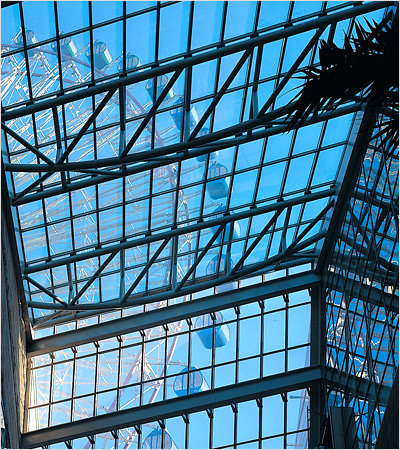 |
The vacuum sputtering process coats glass surfaces with several layers of different materials. Among these, a silver layer effectively reflects infrared rays while maintaining excellent thermal performance.
Beneath the silver layer is an anti-reflective tin oxide (SnO2) base layer that increases the transparency of the glass,Above the silver layer is an isolating nickel-chromium (NiCr) alloy coating. The main function of the top anti-reflective tin oxide (SnO2) layer is to protect the other coating layers. This product offers the high transparency, low reflectivity, good thermal insulating and energy-saving properties required of modern architectural glass and green building design!
|
|
| |
|
Benefits:
‧Approaches the natural color of glass.
‧Highly transparent to visible light (wavelength 380nm ~780nm), will not produce significant glare problems
caused by high reflectance of visible light.
‧Allows most sunlight in the visible range to enter without altering its natural
color. Provides excellent natural illumination and saves energy by reducing the need for artificial lighting.
‧ Relatively high reflectance of infrared radiation (wavelength 780nm~ 3,000nm). In particular, reflects nearly
all long-wave infrared(wavelength over 3,000nm). Blocks the entrance of large amounts of heat, and leaves
interior comfortably cool in the summer and warm in the winter.
|
| |
| |
| Construction of Low-E Insulating Glass Unit |
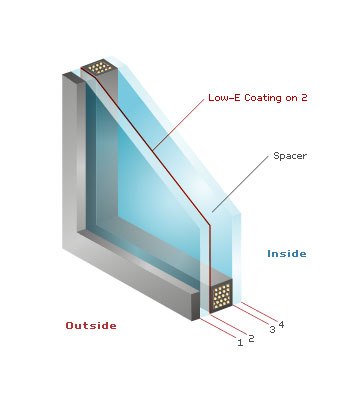 |
| |
| Types of Product: |
| |
| ‧Single Low-E Glass (SLE) |
| ‧Double Low-E Glass (DLE) |
| ‧Low-E-Sun Layer Glass (LES) |
| ‧Ti-based Low-E Glass (TLE) |
| |
| |
| Main tenance Guidelines: |
| |
| ‧To avoid thermal fracure,do not attach in sulating paper to the surface Low-E insulating glass. |
| |
| ‧Because of the necessity of adjusting the interior pressure when using this product at an altitude of 1,000 meters or more,please contact us to discuss the specific detail of your project. |
| |
| Spectrum for different coating glass transmission: |
| |
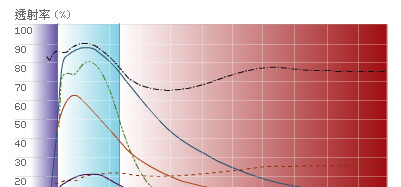 |
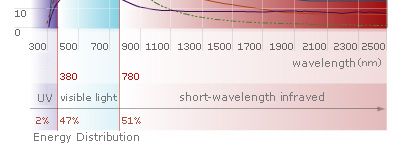 |
 |
| |
| Specification: |
| |
‧ Thickness:3 ~ 19mm
‧Max. size:130" x 236" (3300mm x 6000mm)
‧Min. size:14" x 30" (350mm x 750mm)
‧Low-E insulating glass max. size:118" x 236" (3000mm x 6000mm) |
| |
| |
| Notes on Design and Glazing: |
| |
|
‧You'd better not use Low-E as a single glazing and must be sealed or processed into insulating glass
unit within a very short time as the metallic oxide coating is prone to undesirable reactions once
exposed to air.
‧Emissivity of Low-E insulating glass is 0.02 ~ 0.11, while that of uncoated glass is 0.84.
‧ In tropical or subtropical areas, the Low-E coating should be positioned on #2 for heat insulation
surface (facing inward from outside the building), while positioned on #3 surface for keeping interior
warm in temperate areas.
‧To avoid deterioration and fogging of the glass due to water accumulation, the metal holding frames
must be well drained.
‧Low-E glass designed for laminated glass unit will be under a greater U-value and poorer thermal
insulating capability.
‧To identify the coating surface of Low-E glass, aside from looking for the TGI mark, use a cigarette
lighter to inspect the surface of the glass. Reflection of the flame on ordinary glass surface will be
yellow, while pink or blue on Low-E glass surface.
|
| |
| |
 |
| |
| ‧TGI Low-E Insurating Glass Perforamnce Data Download |
| |
| ‧TGI Coating Glass Processing Flow Download |
|
|
| Examples of Applications: |
| |
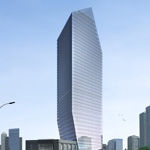 |
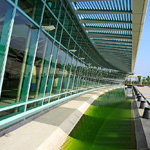 |
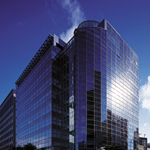 |
| Nanyuan International Plaza |
Taiwan High Speed Rail ChiaYi Station
|
e-Park Technology Center |
| Ningbo |
ChiaYi |
Taipei |
| 33mm LM IL CLR-LES |
24mm IL CLR-DLE |
24mm IL CLR-LES |
| |
|
|
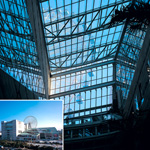 |
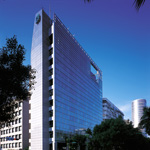 |
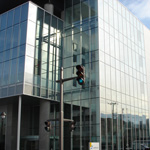 |
| Miramar Entertainment Park |
Fubon Memorial Building |
Yamagata Otemon Pals |
| Taipei |
Taipei |
Japan |
| 26mm IL CLR-DLE-TEMP |
28mm IL CLR-SLE |
28mm IL CLR-SLE |
| |
|
|
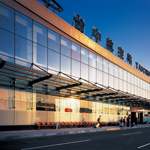 |
.jpg) |
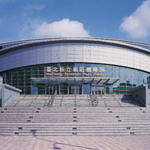 |
| Taichung International Airport |
Kuo-Hua Insurance Building |
Hsinchuang Stadium |
| Taichung |
Taipei |
Taipei |
| 32mm IL CLR-TLE |
26mm IL CLR-SLE |
24mm IL HGR-SLE-TEMP |


